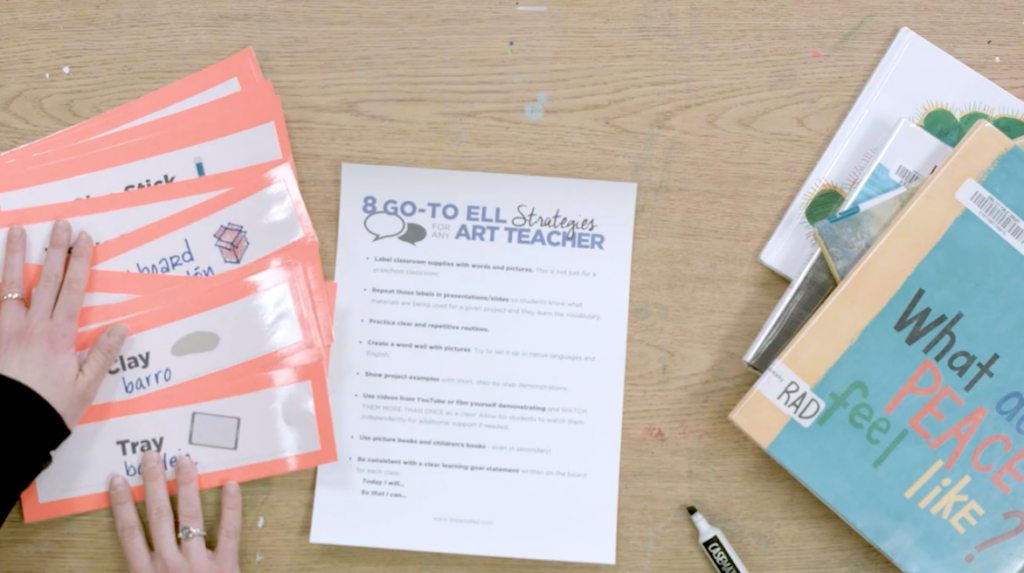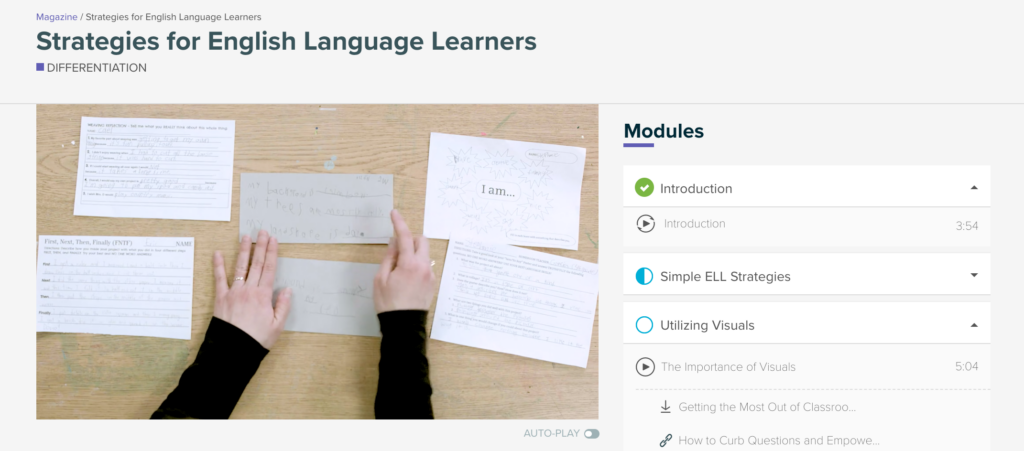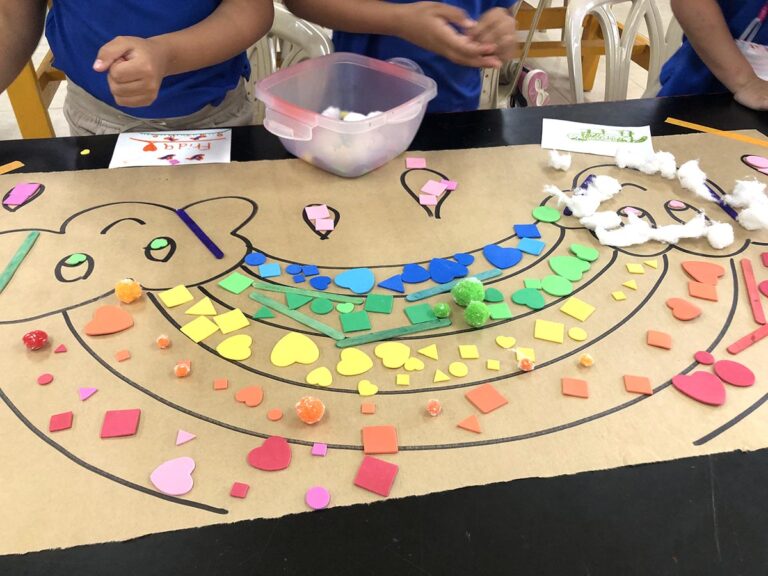If you teach in the United States, chances are you have English Language Learners (ELLs) in your classroom. In the fall of 2016, according to The National Center for Educational Statistics, the number of public school students who participated in English as a Second Language (ESL) assistance programs was 9.6% (almost 5 million).

ESL programs help ensure students meet English proficiency as well as academic content and achievement standards.
The number and need for such programs have only grown.
As a result, in many school districts across the country, teachers with English as a Second Language (ESL) endorsements are being hired. ESL teachers are equipped to help students develop English skills, regardless of their native language.
Download our free 5 Steps To Create A Welcoming Environment for not only your ELLs but all students.
So, how can art teachers and art education help ELLs?
In short, the art classroom is the perfect place for ELLs to not only succeed in working creatively but also with their language skills. As a visually-focused content, art uniquely provides the opportunity for hands-on, relevant learning. As art teachers, we do not just lecture and give our students a textbook, but we can show, demonstrate, and explain verbally. The art classroom is also an oasis for students learning English. In other content areas, such as math, there is a “right” answer. In language classes, students must use all the modalities of language (writing, reading, speaking, listening) to be successful. In art, there is no “right” answer, but there is a whole lot of learning.
The other good piece of news is that any teaching strategy used to help ELLs actually benefits ALL students.

For example, making labels with pictures for materials, clear and practiced routines, consistent goal statements, using technology, and using picture books (even at the secondary level!) are ways to help everyone be successful—you, too!
There are things you need to know about ELLs in your classroom to better support their learning.
Here are five need-to-know essentials about ELL students:

1. They pretend to “get it.”
Native English speakers can be just as guilty of this conflict-avoidance maneuver. Once an ELL knows a nod of a head or a simple “yes” will get them out of talking, reading, writing, or listening to you, they will use it. Don’t be fooled. Students try to get out of working hard by pretending to understand whatever you are saying. In addition, students, in an attempt to protect their pride, will “save face.” Learning a language is really, really hard. Admitting you do not fully grasp a concept is not something humans readily do. You cannot blame students for not wanting to admit they do not understand.
2. They pretend to “not get it.”
The other side of the coin is when a student does know something and does understand, but chooses to act like they don’t. Students may be avoiding a task, not following a direction, or genuinely misbehaving. This is particularly frustrating in the art classroom when students are not using their full potential.
3. Sarcasm is difficult.
For elementary art teachers, sarcasm is a tricky concept anyway. Little learners prefer more physical humor (anything fart related) and often give blank stares at a meant-to-be-funny flippant remark. For secondary teachers, however, healthy sarcasm and good-natured humor are great ways to connect and build rapport with students. While there’s nothing wrong with it most of the time, ELLs may find sarcasm that involves a play on words, cultural references, or a change in tone of voice VERY difficult to grasp. Be conscious and aware as you work your funny bone.
4. Repetition doesn’t always work.
Have you ever practiced a routine or said something over and over and over, and students are still not seeming to follow through or understand? By no fault of your own, it might not be a lack of practice or repetition, but a lack of understanding. For example, a student may well know the phrase “to clean,” but has no clue what “wipe down” means.
5. Avoid assumptions about native language proficiency.
You cannot assume an ELL student has the equivalent of proficiency in their native language for their respective grade level. For example, a 3rd-grade ELL student may or may not be able to read at a 3rd-grade proficiency level in their native language. Or, a “newcomer,” someone who has hardly any English proficiency, might be a 3rd grader by age but has never attended any kind of school before.
To Learn More
If you’re interested in learning more, there are many great resources out there. Here are three other resources we recommend:
Strategies for English Language Learners PRO Learning Pack
If you’re looking for information about working with ELLs more directly related to your work in the art room, this is the place to start. In this Learning Pack, you will find the resources you need to set up your classroom, scaffold your curriculum, and design your instruction to best serve your English Language Learners.
5 Tips for Teaching English Language Learners (Ep. 143)
Megan Dehner has recorded videos and PRO packs for AOE, and now she is the Senior Editor of the AOEU Magazine. In this episode, Tim brings Megan on to introduce herself, talk about her upcoming writing, and most importantly, her best strategies for teaching English Language Learners.
5 Strategies To Help Your English Language Learners
A great article to give you five concrete and manageable ideas to benefit your ELLs and all your students.
Teaching in today’s classroom is a complex endeavor. Each student and their creative growth must be fostered. Remember, the good news is by specifically strategizing your teaching for your ELLs success you are becoming a better teacher for all your students.
Magazine articles and podcasts are opinions of professional education contributors and do not necessarily represent the position of the Art of Education University (AOEU) or its academic offerings. Contributors use terms in the way they are most often talked about in the scope of their educational experiences.







